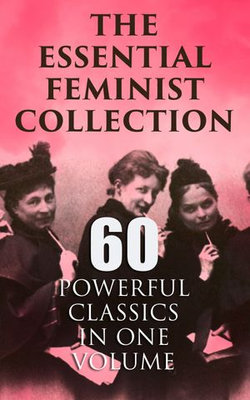e-artnow presents to you this meticulously edited collection of feminist masterpieces - from fictional protagonists who influenced generations of young women to the real heroines of the past, their life stories and their legacy. Fiction: Camilla (Fanny Burney) Maria; Or, The Wrongs of Woman (Mary Wollstonecraft) Pride and Prejudice (Jane Austen) Jane Eyre (Charlotte Brontë) The Scarlet Letter (Nathaniel Hawthorne) Lady Macbeth of the Mzinsk District (Nikolai Leskov) Hester (Margaret Oliphant) Life in the Iron Mills (Rebecca Davis) Little Women (Louisa May Alcott) The Portrait of a Lady (Henry James) Anna Karenina (Leo Tolstoy) Tess of the d'Urbervilles (Thomas Hardy) North and South (Elizabeth Gaskell) The Yellow Wallpaper (Charlotte Perkins Gilman) Herland (Charlotte Perkins Gilman) A Doll's House (Henrik Ibsen) Hedda Gabler (Henrik Ibsen) The Awakening (Kate Chopin) The Woman Who Did (Grant Allen) Miss Cayley's Adventures (Grant Allen) New Amazonia (Elizabeth Corbett) A Girl of the Limberlost (Gene Stratton-Porter) The Iron Woman (Margaret Deland) My Ántonia (Willa Cather) The House of Mirth (Edith Wharton) Summer (Edith Wharton) Sister Carrie (Theodore Dreiser) Sisters (Ada Cambridge) Hagar (Mary Johnston) Samantha on the Woman Question (Marietta Holley) The Precipice (Elia Wilkinson Peattie) To the Lighthouse (Virginia Woolf) Miss Lulu Bett (Zona Gale) Lady Chatterley's Lover (D. H. Lawrence) The Enchanted April (Elizabeth von Arnim) Gone with the Wind (Margaret Mitchell) Emily of New Moon (Lucy Maud Montgomery) Memoirs: Madame Vigée Lebrun Jane Austen Caroline Herschel Mrs. Seacole Elizabeth Cady Stanton Emmeline Pankhurst Biographies: Lucretia Sappho Aspasia of Cyrus Portia Octavia Cleopatra Julia Domna Zenobia Valeria Hypatia Roswitha the Nun Marie de France Mechthild of Magdeburg Joan of Arc Catharine of Arragon Anne Boleyn Queen Elizabeth Mary, Queen of Scots Queen Anne Maria Theresa Marie Antoinette Madame de Stael Augustina Saragoza Charlotte Brontë Florence Nightingale Harriet Tubman





Share This eBook: